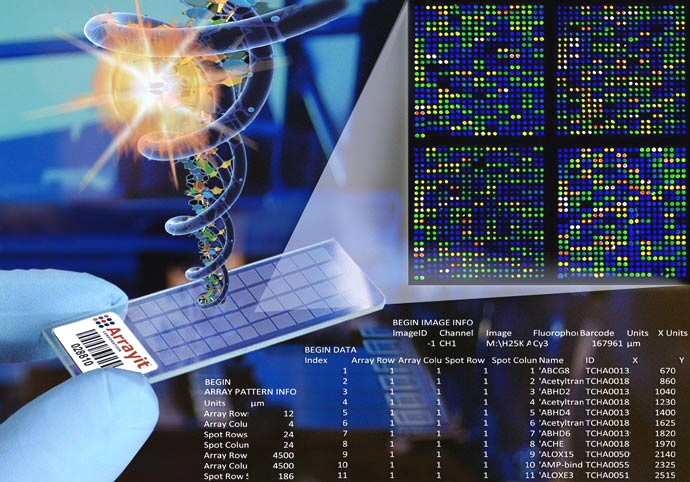Micro-bio-chip DNA Genome Microbiochip (structure and function) _ PhD in nanotechnology microelectronics
Researcher and author: Dr. ( Afshin Rashid)
Note: The advantages of microbio technology Micro-parametric arrays can be combined with the speed and sensitivity of cell-based systems to create the Genome microbiochip .
The Genome microbiochip , a bio- nanoelectronic device and microarray , performs a wide range of genomic, perteomic, and functional analysis on a large scale. Micro-bio-chip DNA Genome microbiochip are mainly three types: DNA microarrays , protein microarrays, and micro fluid chip. By integrating microarray and microfluidic systems, a micro-nano-total analysis system, often referred to as the laboratory system ( nanobiochip ), is produced. Advances in nanotechnology have consistently reduced the size of nanochemistry , which in turn has reduced production costs and increased its high throughput capability. Due to the low cost, high power and nano-miniaturization benefits, this technology has great potential. The biggest advantage of DNA arrays is their high speed and power, and in various genomic applications, including analysis by electrical nanoparticles, the Genome microbiochip . Microbiopic chips, especially functional microarrays, Is used to study basic biological properties such as the interaction of cells or other molecules.
Genome microbiochip are capable of performing a variety of chemical and cellular analyzes, isolation and reactions. Genome microbiochip is one of the fastest growing areas of microtechnics and is the development of nanotechnology and many technologies for the development of applications in a wide range of disciplines including analysis and detection in cells by nanotechnology. Particles are done. The microarrays are based on the concept of hybridization, cDNA binding, complementary DNA strands from sample RNA, to synthetic DNA strands. In the prototype microarray, the synthetic strings are attached to a small, sturdy support. This support - biochemistry - can be generated with thousands of probes or various recording agents.
Researcher and author: Dr. ( Afshin Rashid)
PhD in Nano-Microelectronics



